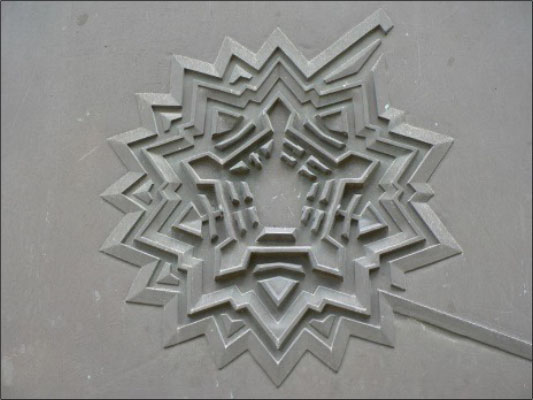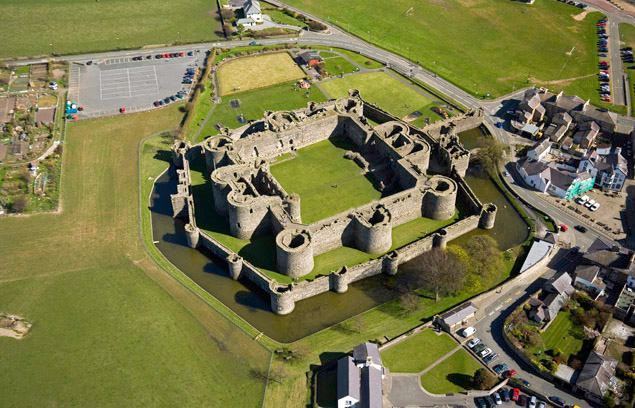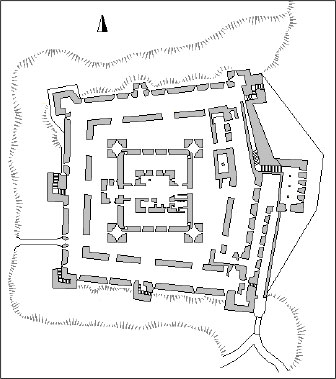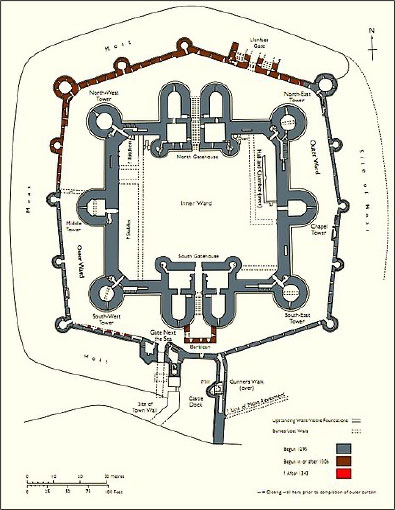Medieval Castles Series: Concentric Castle — Part 5
Throughout this Medieval Castle series, the recurring theme is change and adaptability. Each design from the wooden Motte and Bailey to the Shell Keep to the Stone Keep, all had to change and evolve with the times. The final castle design of the period, the Concentric Castle, is no different.
Welcome to Part 5 of the Medieval Castle series! If you’re new to the series, welcome!
Follow each article in the series as it’s published.
Medieval Castles: Almost everything you wanted to know – Part 1
Motte and Bailey Castles – Part 2
Shell Keep Castles – Part 3
Stone Keep Castles – Part 4
Concentric – Part 5 (this one)
Medieval Castles: Different Types of Architecture
What is a concentric castle?
A concentric castle design is a keepless castle “with two or more concentric curtain walls1”. (wikipedia.com). The outermost wall is lower than the inner one(s) allowing defenders to see the enemy coming, and be better able to defend the castle.
Concentric castles look like a “castle within a castle” and can sometimes have towers built in each corner. In the rare chance the castle does have a keep, it’s attached to the innermost fortified wall.
1 A defensive wall between two fortified towers or bastions of a castle, fortress, or town. (wikipedia.com)

Map of the citadel
Map of the citadel – commons.wikimedia.org Lille, France Belvoir, Israel.
Castle Castle Construction
These castles are built out of whatever stone is available in the area, with the terrain determining their shape. Most often they are square or oblong but can be irregular to follow the contours of the land.
Historian Arnold Taylor describes Beaumaris Castle in Wales as “Britain’s most perfect example of symmetrical concentric planning”. (castleworld.com).

Medieval Castles – Beaumaris Castle
Aerial view Beaumaris Castle (CD34) Anglesey North Castles Historic Sites
Castle History
The Emergence and Decline of the Design
The main reason for the design was to protect against more advanced weapons, such as the newly introduced (in Europe) gunpowder. It’s believed the design is based on defensive wall formations seen in the Middle East during the Crusades.
The first concentric castle, Caerphilly castle, was built in 1270 in Wales by King Edward I.

Caerphilly castle
The concentric design was used until the end of the Medieval period, in the late 15th century. The feudal system was being replaced by monarchies and castles replaced by palaces.
Advantages and Disadvantages of the Concentric Design
Advantages
The design was almost impregnable. Intruders had to breach at least two walls, then oftentimes pass through a guarded gatehouse. The higher inner wall(s) gave archers a better vantage point to fire at the enemy. If the castle was symmetrical in shape, it gave unobstructed views of the surrounding land, requiring less lookouts.
Disadvantages
Just as with the Stone Keep castle design, concentric castles cost a lot of money to build, making them out of reach for the majority of noblemen. Only kings or power military orders, such as the Knights Hospitaller or Knights Templar were able to build them. In fact, it wasn’t unusual to see smaller, more simple castles built near concentric ones. Not only were they expensive, but they also took several years to build. By the time the castle was finished, the original purpose for which it was built, was gone.
Did You Know?
One of the most well-preserved concentric castles around today, Krak de Chevaliers castle in Tartus, Syria, played an important role in history.
Given to the Knights Hospitaller in 1142, the castle was part of a group of castles the group owned along the border of the County of Tripoli2. It acted as an administration building and military base until the Knights Hospitaller surrendered it to Mamluk sultan Baibars, in 1271.
From 1142 to 1170, the knights rebuilt the castle only to have it damaged by an earthquake. It was during this second remodel in the late 13th century that it became a concentric castle.
2 County of Tripoli – 1102–1289 was the last of the Crusader states. It was founded in modern-day region of Tripoli, northern Lebanon and parts of western Syria.
Concentric Castles Today
Now we’ve reached the end of the Almost Everything You Wanted to Know About Medieval Castles series. It was fun for me to learn and share all about the different designs of the period. I hope the series gave you information you didn’t have before, or, at the very least, a new vacation destination…
Thank you for joining me on this journey!
Have you ever visited a Concentric Castle? Please share in the comments below.
Your subscription (free or paid) will be gratefully received, and will help me continue to build ‘le Bulletin’ - the weekly newsletter of MyFrenchLife.org Magazine to be even more rich.?Merci Mille Fois
Image Credits
- Plan of Belvoir fortress via commons.wikimedia.org.
- Map of the citadel via commons.wikimedia.org.
- Beaumaris castle plan via commons.wikimedia.org.
- Beaumaris castle via commons.wikimedia.org.
- Caerphilly castle via commons.wikimedia.org.
- Krak des Chevaliers castle via commons.wikimedia.org.
- Château Gaillard via commons.wikimedia.org.
- Château Comtal via commons.wikimedia.org/flickr.com – ©2006 Djof
- Château D’Alleuze via commons.wikimedia.org – © 2011 Troye Owens









Great article! Thanks for the journey.
Very interesting!